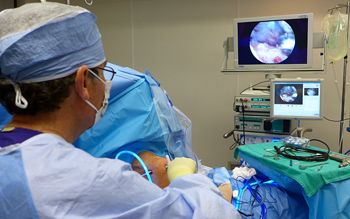In frozen shoulder, the shoulder capsule thickens and becomes tight. Slowly the capsule becomes inflamed and pain becomes severe.The hallmark sign of this condition is being unable to move your shoulder – either on your own or with the help of someone else.
It develops in three stages:
- Freezing— In the”freezing” stage, there is gradual increase in pain. As the pain worsens, your shoulder loses range of motion. Freezing typically lasts from 6 weeks to 9 months.
- Frozen— Painful symptoms may actually improve during this stage, but the stiffness remains. During the 4 to 6 months of the “frozen” stage, daily activities may be very difficult.
- Thawing— Shoulder motion slowly improves during the “thawing” stage. Complete return to normal or close to normal strength and motion typically takes from 6 months to 2 years.




